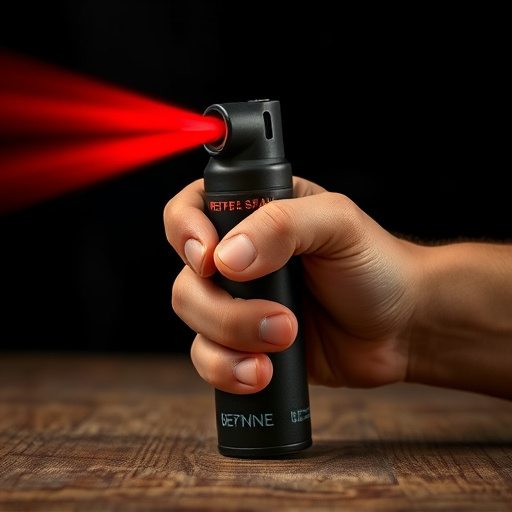Concealed pepper spray carrying techniques are popular for civilian self-defense, but understanding local laws and regulations is vital. Different regions have unique rules regarding possession, use, and carriage of pepper spray, with some restricting it to qualified individuals or requiring permits. Using discreet methods like attaching canisters to keychains or practicing proper handling ensures responsible and effective deployment without drawing unnecessary attention. Regular training in various scenarios, understanding spray mechanics, and following safety tips like knowing local laws and having first aid knowledge are essential for maximizing the tool's benefits while ensuring personal safety.
In today’s unpredictable world, civilians are increasingly prioritizing personal safety. One powerful tool gaining traction for civilian protection is defensive spray, particularly concealed pepper spray carrying techniques. This comprehensive guide explores the multifaceted aspect of pepper spray, from understanding its benefits and legal considerations to mastering concealed carrying techniques and essential training tips for effective real-life scenario defense. Discover how these strategies empower individuals to protect themselves confidently.
- Understanding Pepper Spray: Benefits and Legal Considerations for Civilian Use
- Concealed Carrying Techniques: Ensuring Discreet Self-Defense
- Training and Safety Tips for Effective Use of Pepper Spray in Real-Life Scenarios
Understanding Pepper Spray: Benefits and Legal Considerations for Civilian Use
Pepper spray, a non-lethal self-defense tool, has gained significant popularity among civilians seeking protection in various scenarios. It’s a versatile defense mechanism that can temporarily disable an assailant by causing irritation and pain, providing users with precious time to escape or seek help. The active ingredient, capsaicin, is derived from chili peppers, making it an effective yet relatively safe option for self-defense compared to other chemical agents.
When considering concealed pepper spray carrying techniques, understanding the legal aspects is crucial. Many regions have specific regulations regarding the possession and use of pepper spray. Users must be aware of the permissible types, minimum concentrations, and any restrictions on where and how it can be carried. For example, some areas allow only qualified individuals like law enforcement or security personnel to possess and use pepper spray. Others may require permits or registration for certain strengths. Familiarizing yourself with local laws ensures responsible civilian usage while maximizing its benefits as a personal safety tool.
Concealed Carrying Techniques: Ensuring Discreet Self-Defense
Carrying a concealed defensive spray is a popular choice for those seeking personal protection, especially in high-risk situations or when traveling to unfamiliar places. There are various techniques to ensure discreet self-defense while carrying concealed pepper spray. One of the most fundamental aspects is understanding local laws regarding hidden weapons. Different regions have distinct regulations, so it’s vital to know your rights and responsibilities. Some areas allow concealed carry with a permit, while others may restrict certain types of self-defense tools.
To remain discreet, consider using a compact, easily concealable spray canister designed for hidden storage. These can be attached to keychains, belt clips, or even inside purses or pockets. Additionally, learning proper handling techniques allows you to deploy the spray quickly and effectively without drawing unnecessary attention. Practice makes perfect; familiarizing yourself with these concealed carrying techniques empowers individuals to take control of their safety while remaining low-key.
Training and Safety Tips for Effective Use of Pepper Spray in Real-Life Scenarios
Training and safety are paramount when considering the effective use of pepper spray for civilian protection. It’s crucial to understand the mechanics of the spray, including its range, effectiveness, and de-escalation strategies. Concealed pepper spray carrying techniques should be mastered, ensuring it is easily accessible yet discreet. Regular practice in various scenarios—from mock assaults to self-defense drills—helps individuals become familiar with the spray’s deployment, reducing panic during real-life threatening situations.
Safety tips include understanding local laws regarding pepper spray use and ensuring proper storage to prevent accidental discharge or misuse. Users must also be aware of potential cross-contamination, keeping eyes and mouths covered immediately after application, and knowing basic first aid for eye irritation or respiratory distress.
The strategic deployment of concealed pepper spray can be a powerful tool for civilians seeking personal protection. By understanding its benefits and legal implications, learning efficient carrying techniques, and mastering training and safety protocols, individuals can empower themselves to defend against potential threats in various scenarios. Concealed carrying techniques ensure discretion, allowing users to maintain their safety without drawing unnecessary attention. With proper training, pepper spray becomes a reliable and effective self-defense mechanism for those who prioritize their well-being.
